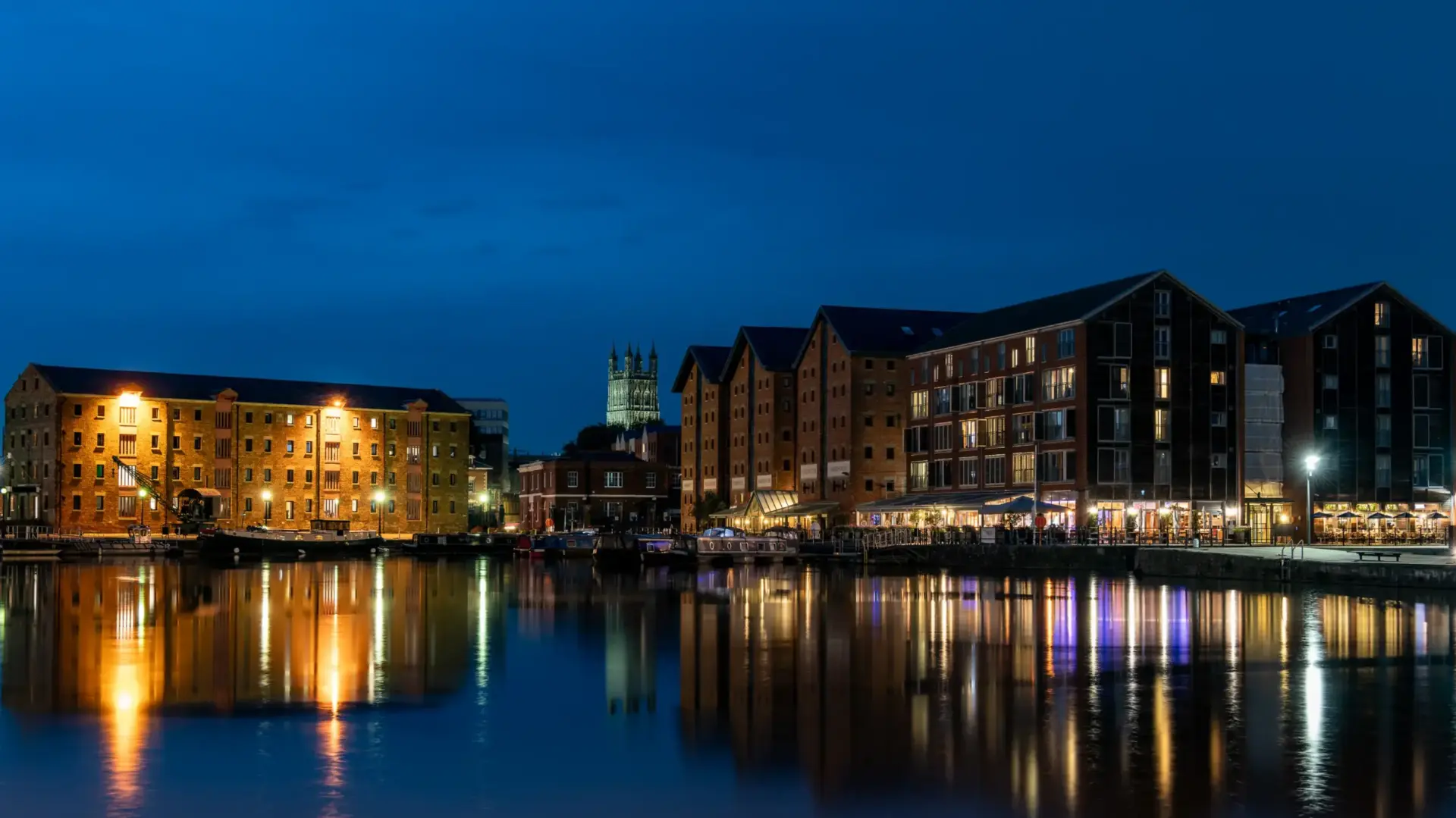When October rolled in with its crisp air and soft sunlight, I knew it was the perfect time to visit Purton Ship Graveyard. Nestled along the Severn Estuary, this forgotten resting place of ships whispers stories of industry, abandonment, and nature’s gentle reclaiming. Armed with my camera bag and a tripod, I set off for a day of exploration and photography at this unique location.
First Impressions of Purton
The moment I arrived, the atmosphere hit me. The air was cool, the kind of briskness that wakes you up but doesn’t send you running for layers. The light was playing hide-and-seek with the clouds, creating shifting patches of brightness and shadow across the landscape. Scattered structures of decaying wood and concrete dotted the area, semi-submerged in mud and grass. And that smell? Earthy, with a faint hint of salt from the estuary nearby.
Weathered Wood and Time’s Artwork
The standout feature at Purton is the gravestone-like hulks of weathered wooden ships. One of my favorite shots captured a decaying wooden beam partially hidden by lush green grass. I crouched low for a ground-level perspective (and got my knees muddy in the process). Shooting upwards slightly, I used a 14-24mm wide-angle lens with a wide aperture of f/16 to isolate the wood and create creamy bokeh in the background. The textures of the moss and lichen on the beams came to life in the soft, diffused light. The woodgrain looked like wrinkles of an ancient face, telling stories of tides and storms past.
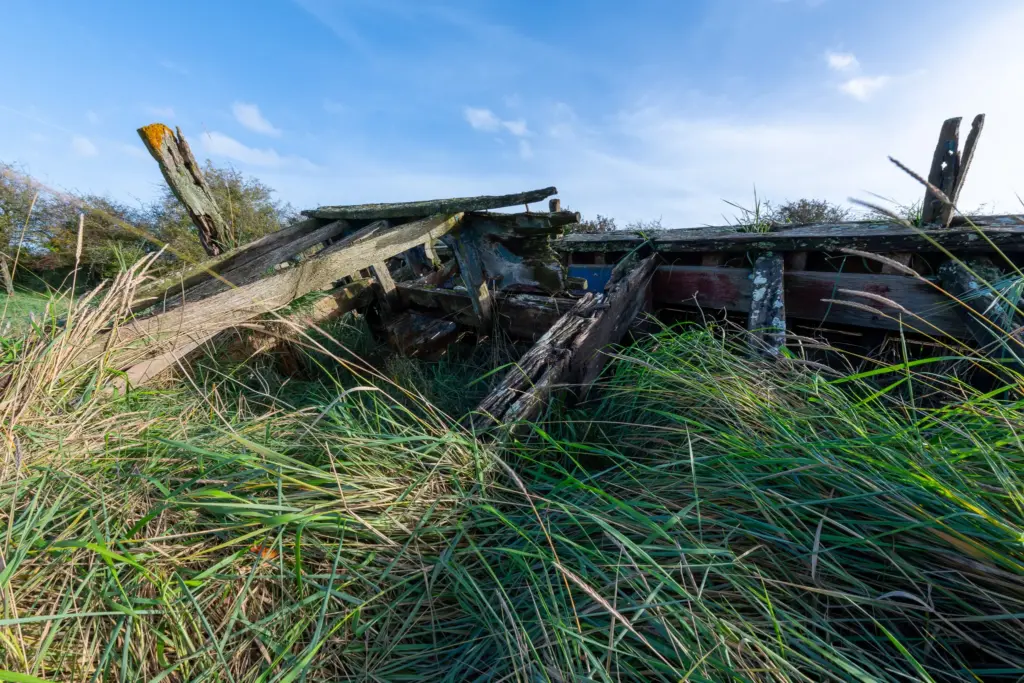
For shots like this, manual focus is your best friend. The autofocus on my lens kept trying to lock onto a blade of grass instead of the wood. Switching to manual mode allowed me to fine-tune the settings until the moss and peeling bark were perfectly sharp.
Concrete and Contrast
Not all the structures are wood. One particularly intriguing find was a concrete relic half-sunken into the mud. Its grey surface was heavily weathered, streaked with cracks and patches of moss. I opted for a wide-angle 24mm lens here to exaggerate the structure’s imposing presence and highlight the contrast between its rigid geometry and the organic chaos of the surrounding grass and mudflats.
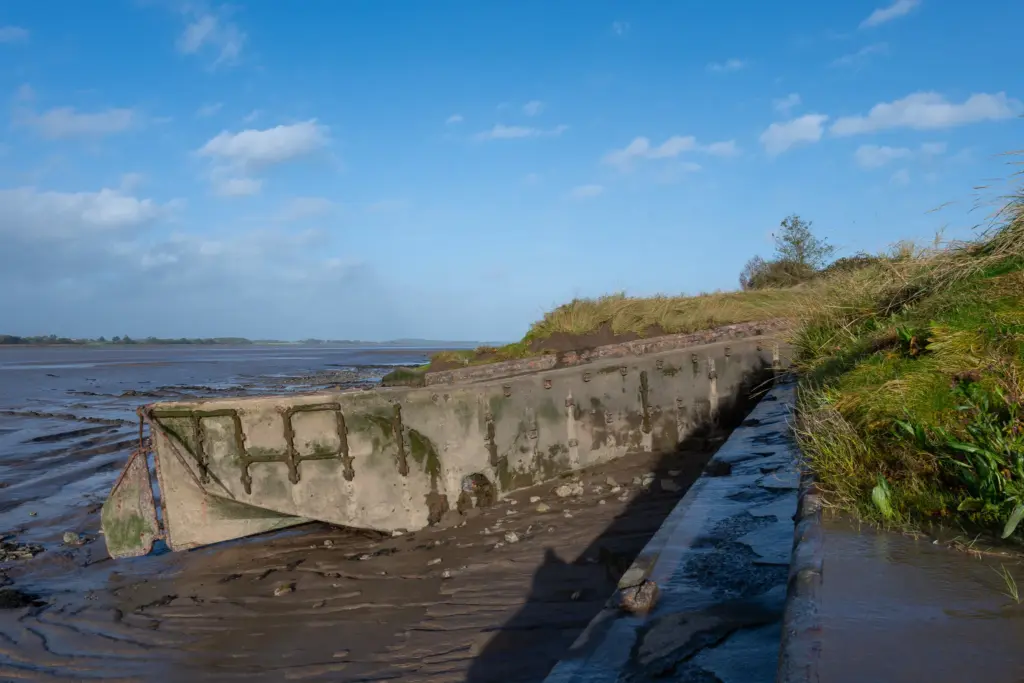
Here’s where I ran into a small challenge. The bright sky behind the concrete structure was overexposing in my shot. To fix that, I dialed my exposure compensation down to -1 stop and used a polarizing filter to cut some of the glare. I also positioned myself so the clouds drifted in behind the structure, adding visual interest to the background. Top tip for photographing reflective or high-contrast scenes like this? Always check your histogram to ensure you’ve got detail in both the highlights and shadows.
A Close-Up Love Affair with Texture
At one point, I spotted an old wooden ship lying diagonally, its rough surface studded with rusty nails. I couldn’t resist going in for a close-up to capture the intricate details. For this kind of shot, I used my trusty wide-angle lens with a focal length of 14mm. Shooting at f/16, I balanced enough depth of field to keep the rusted nails tack-sharp while letting the background melt away into soft blur. Lighting was everything here. A cloud rolled over just as I was shooting, turning the harsh light into a beautifully diffused glow. This softer light brought out the texture without casting harsh shadows.

Playing with Patterns and Leading Lines
One of the most striking sights was a collection of wooden beams leaning at sharp angles, almost like a skeletal ribcage emerging from the earth. I immediately thought “leading lines!” and adjusted my composition to guide the eye through the frame. Using the 14-24mm wide-angle lens at f/16, I angled my camera slightly upward to give a sense of depth while keeping the distant hills and estuary in view. Even handheld, shooting at ISO 64 kept my shutter speed fast enough to avoid motion blur.
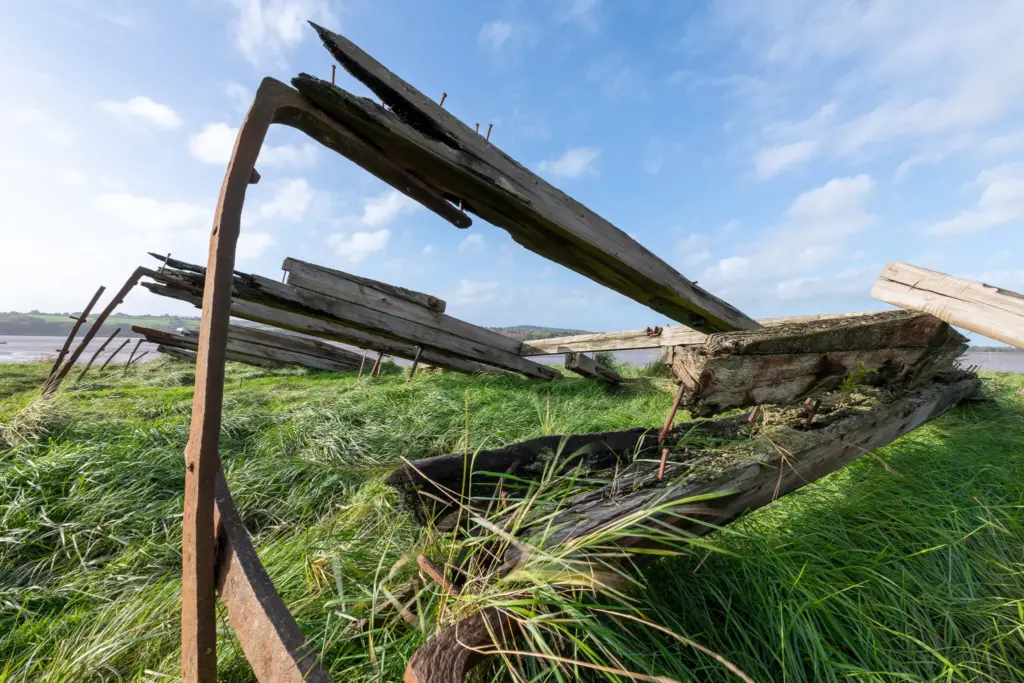
Pro tip? When working with leading lines, always take a moment to walk around your subject. Your initial instinct might get you a good shot, but exploring different angles could reveal a GREAT one.
Capturing Low-Tide Landscapes and Submerged Structures
The low-tide landscape of Purton offers a completely different perspective on this hauntingly beautiful location. One of my favorite shots featured the exposed mudflats, with ripples in the wet sand leading your eye across the frame. For this scene, I used the same 14-24mm lens at 24mm, dialing in an aperture of f/16 to achieve sharp focus from the foreground to the background. The natural water channels created by the tide served as perfect leading lines, guiding the viewer’s gaze toward the distant hills.
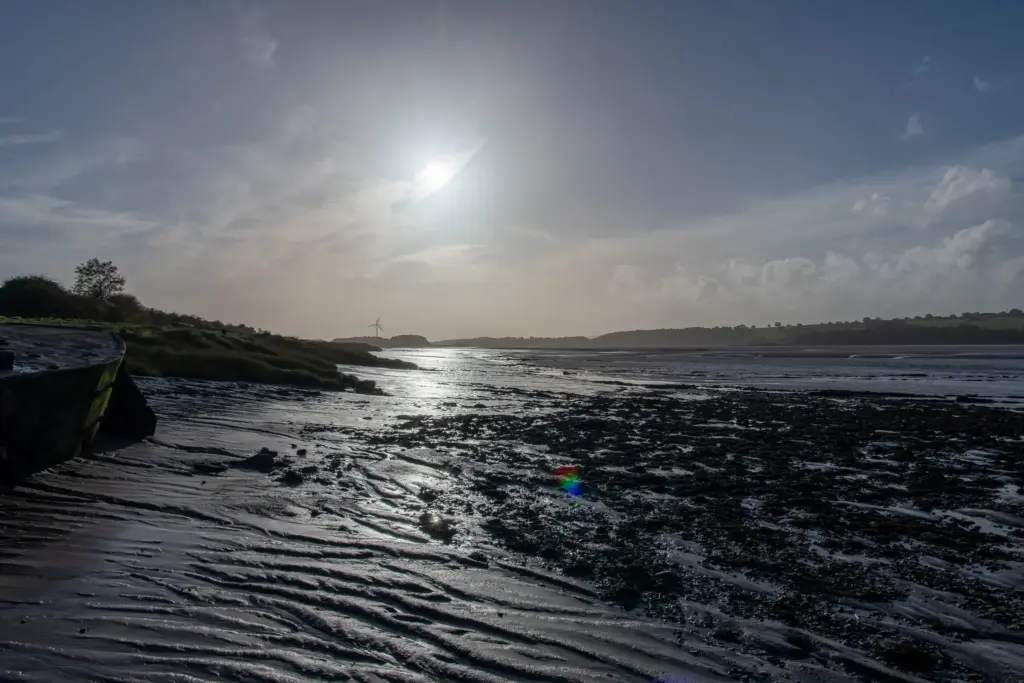
Timing was key here. The sunlight was bright but soft, so I waited until the light caught the subtle textures of the mud. To counterbalance the glare on the water, I once again slipped on a polarizing filter. This filter is honestly a lifesaver when shooting reflective surfaces, as it adds depth and clarity to the image.
Another shot zeroed in on the partially submerged structures resting eerily in the mudflats, these were the Arkendale H and the Wastdale H, which overshot Sharpness Dock in thick fog and a strong tide. They were carried upstream and collided with one of the piers of the Severn Railway Bridge, causing the two adjacent spans to fall. Some of the ironwork struck the barges, resulting in an explosion and five fatalities.
Their jagged outlines and dark tones contrasted beautifully with the serene water backdrop. For this one, I switched to my 70-200mm telephoto lens and captured from a distance. The longer focal length compressed the scene, making the structures feel even more prominent against the calm surroundings. I kept the aperture at f/16 to isolate the structures while keeping the surroundings slightly softened for a dreamlike effect.
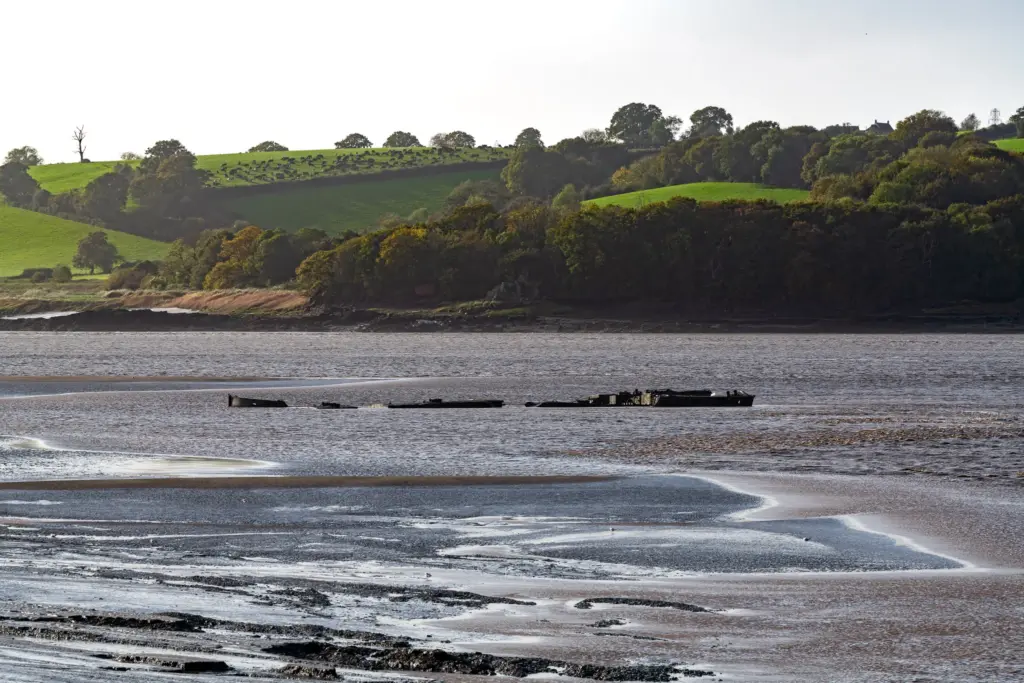
Tidal Mudflats and Dynamic Textures
The tidal mudflats themselves were a wonder to photograph. I was drawn to the reflective quality of the wet sand, where patterns created by receding water brought the entire foreground to life. Shooting on a tripod with the 14-24mm wide-angle lens, I set the aperture to f/16 and ISO to 64 for a crisp, evenly lit shot. Using an ND filter, I achieved a 15-second exposure, and I especially loved how the textures seemed to shimmer under the angled sunlight. I made sure to position myself so that the scattered rocks and pebbles added visual interest without overwhelming the frame.
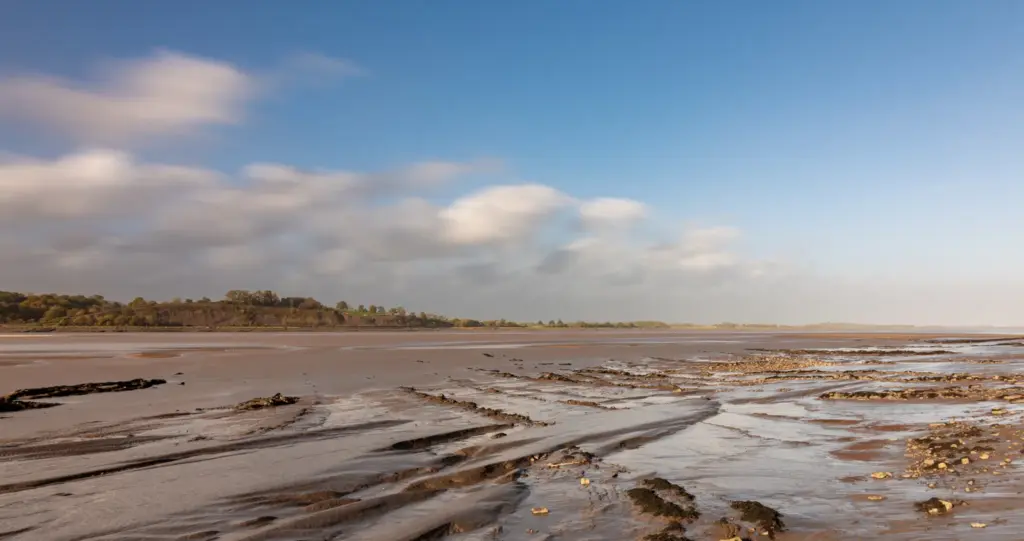
To enhance the sky, I adjusted my white balance slightly toward cooler tones during post-processing. This gave the elongated clouds a more ethereal feel, complementing the tranquil mood of the scene.
Muddy Adventures and Lessons Learned
A word of caution if you plan to visit Purton Ship Graveyard yourself: the mud here is no joke. At one point, I got a bit overzealous chasing a low-angle composition and my left boot sank. Deep. Lesson learned? Always have a sturdy tripod or monopod with you for those tricky ground-level shots because stability is key on slippery terrain.
Why October is the Perfect Month
Photographically, October is magic at Purton. The grass still holds its summer green, while the sky starts transitioning to those dramatic autumn hues. The low-angle sunlight this time of year is ideal for highlighting textures, and the cooler weather means fewer midges. Plus, there’s a certain poetry in capturing these skeletal remains of ships during a season that, like them, reflects beauty in decay.
Final Thoughts
Purton Ship Graveyard is one of those locations that feels like stepping into a time capsule. It’s a mix of history, mystery, and nature’s relentless yet beautiful process of reclaiming man-made things. For photographers, the opportunities for texture, contrast, and storytelling compositions are limitless.
If you go, pack your camera bag with a selection of lenses—from wide-angle for those sweeping scenes to a macro for close-up details. Consider a polarizer to tame the sky’s reflections and a tripod for experimenting with angles. Oh, and aren’t you glad I reminded you about waterproof boots?
Until next time, keep exploring and clicking!

